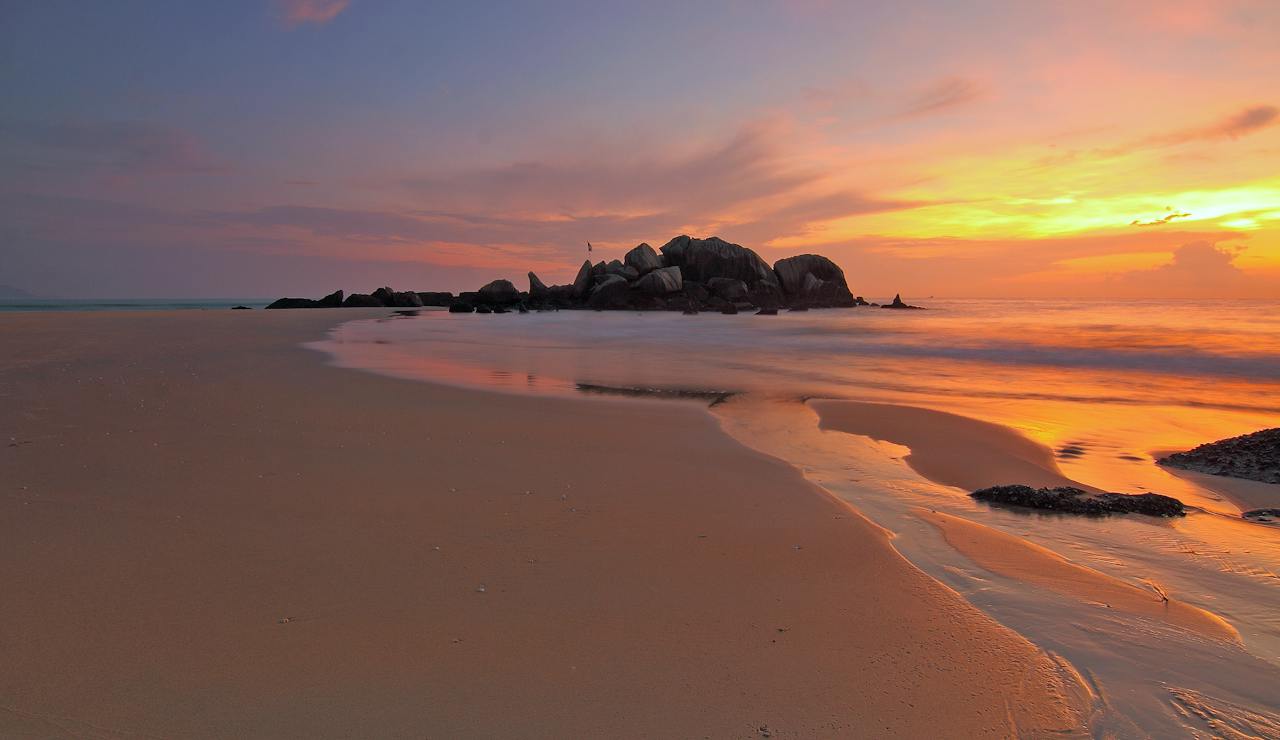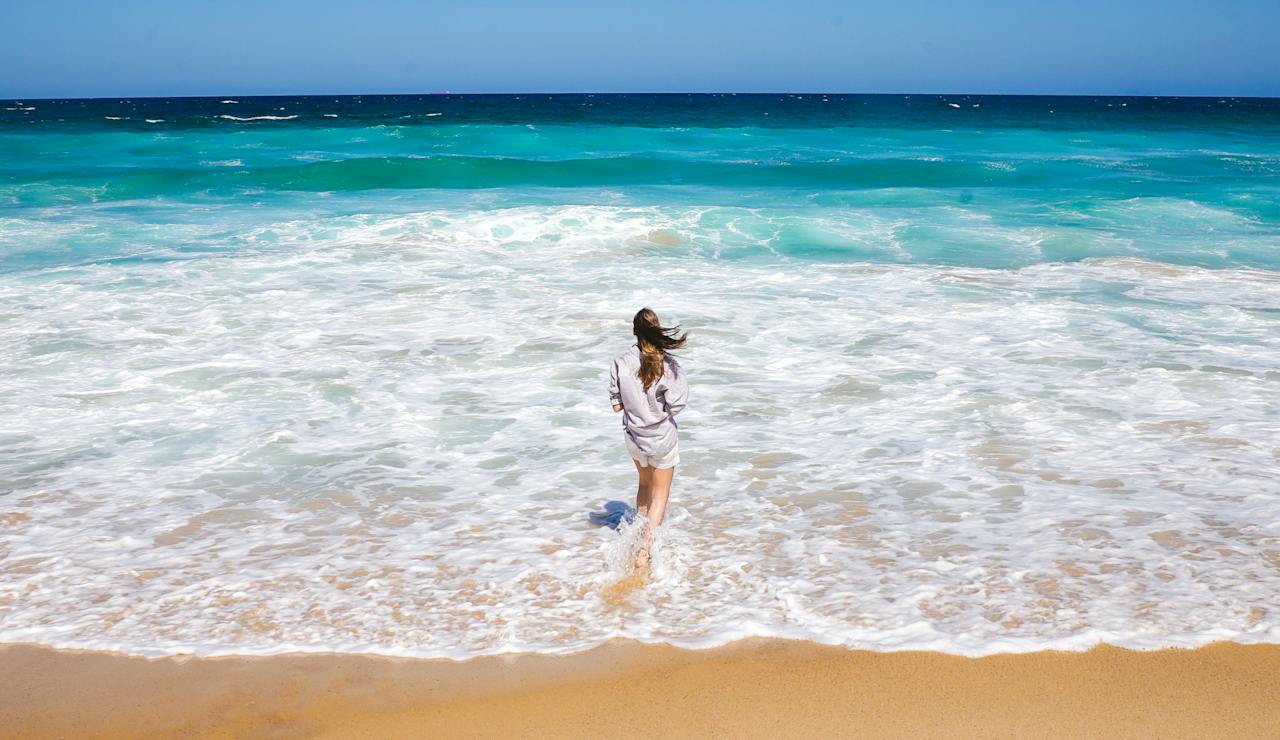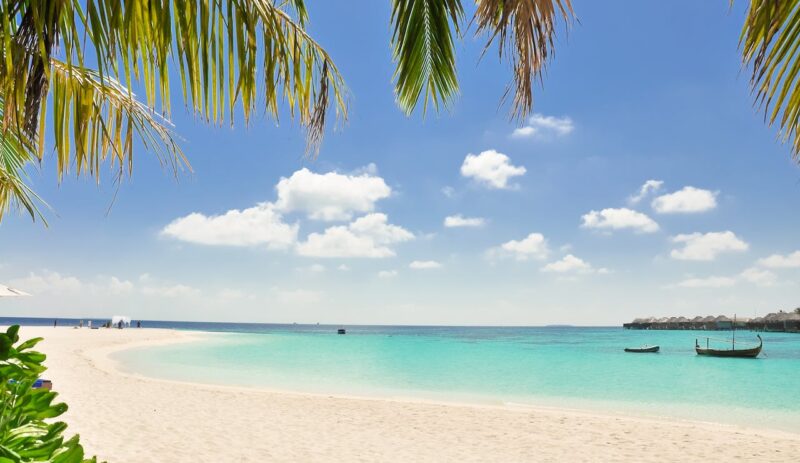RECOMMENDED: The best things to do in Fuerteventura.
What is the average temperature in Fuerteventura during each month of the year?
The average temperature in Fuerteventura varies throughout the year. In January, the average temperature is around 18°C (64°F), while in August, it can reach up to 28°C (82°F). The weather is generally mild and pleasant, making it a great destination for beach lovers and outdoor activities.
Fuerteventura, the second-largest of the Canary Islands, is known for its warm, desert-like climate year-round, making it a popular destination for beach lovers and outdoor enthusiasts. With its sunny weather, low rainfall, and pleasant temperature, Fuerteventura offers the perfect conditions for a relaxing vacation or an adventure-filled getaway. In this comprehensive guide, we will explore the weather patterns of Fuerteventura month by month, including temperature variations, sunlight hours, cloud cover, rainfall, wind speed, humidity levels, and sea temperature. Whether you’re planning to soak up the sun on the beautiful beaches, explore the island’s natural landscapes, or engage in water activities, understanding the weather conditions of Fuerteventura can help you plan the best time to visit. So, let’s dive into the climate of Fuerteventura and discover the ideal months to enjoy everything this stunning island has to offer.
Fuerteventura Check List ✔
❖ Book cheap holidays from the UK to Fuerteventura with LoveHolidays
☘ Book cheap holidays worldwide to Fuerteventura with Trip.com
✈ Book cheap flights to Fuerteventura with Expedia
✔ Book the best tours in Fuerteventura with Viator
➳ Find the best hotel deals in Fuerteventura with Agoda
❖ Get the best car rental deals with DiscoverCars
☘ Get the best discounted Trips and Tours at GetYourGuide
✎ Never leave without travel insurance. I get mine at HeyMondo. It’s easy to set up, cheap, and reliable.
✔ Skip the Taxi queue at the airport with a Transfer from Suntransfers
$ Withdraw money without hidden fees and avoid rubbish exchange rates with Wise (You’ll get a card for free!)

Understanding the Climate of Fuerteventura
Fuerteventura enjoys a warm, desert-like climate throughout the year, thanks to its location in the Atlantic Ocean. The average temperature on the island is around 25 degrees Celsius, with mild winters and hot summers. The trade winds blowing in from North Africa play a significant role in maintaining the pleasant temperature of the island. These winds bring warm air, keeping the winter months mild and the summer months hot. Fuerteventura is known for its sunny weather, with over 3,000 hours of sunshine per year, and low rainfall, making it the perfect destination for year-round outdoor activities.
The Impact of Atlantic Ocean on Fuerteventura’s Climate
The Atlantic Ocean has a moderating effect on the temperature of Fuerteventura, ensuring that the weather remains warm and enjoyable throughout the year. The warm water of the Atlantic Ocean influences the temperature of the surrounding air, creating a comfortable environment for visitors. The ocean breeze, combined with the warm temperature, provides relief from the high summer heat, making the weather more bearable. Additionally, the trade winds from North Africa help keep the humidity levels relatively low, adding to the overall pleasant weather conditions of the island. The Atlantic Ocean also influences the cloud cover and rainfall patterns of Fuerteventura, which we will explore in the following sections.
RECOMMENDED: The best Excursions in Fuerteventura.
Monthly Temperature Variations in Fuerteventura
The temperature in Fuerteventura shows variations month by month, with mild winters and hot summers. Let’s take a closer look at the winter and summer temperature ranges to understand the best time to visit the island, depending on your temperature preferences.
| Month | Min (°C) | Max (°C) | Mean (°C) | Min (°F) | Max (°F) | Mean (°F) |
|---|---|---|---|---|---|---|
| January | 14.8 | 20.8 | 17.8 | 59 | 69 | 64.1 |
| February | 14.9 | 21.1 | 18 | 59 | 70 | 64.4 |
| March | 15.5 | 22.3 | 18.9 | 60 | 72 | 66 |
| April | 16.4 | 23.2 | 19.8 | 61 | 74 | 67.6 |
| May | 17.6 | 24.7 | 21.1 | 64 | 76 | 70 |
| June | 19.4 | 26.2 | 22.8 | 67 | 79 | 73.1 |
| July | 20.9 | 27.5 | 24.2 | 70 | 81 | 75.5 |
| August | 21.8 | 27.9 | 24.8 | 71 | 82 | 76.7 |
| September | 21.4 | 27.5 | 24.4 | 70 | 81 | 76 |
| October | 20 | 26.5 | 23.3 | 68 | 80 | 73.9 |
| November | 17.9 | 24.2 | 21.1 | 64 | 76 | 69.9 |
| December | 16.2 | 22.1 | 19.1 | 61 | 72 | 66.4 |
| Year | 18.1 | 24.5 | 21.25 | 64.5 | 76.1 | 70.5 |
Winter Temperatures in Fuerteventura
During the winter months, the temperature in Fuerteventura remains mild, making it an attractive destination for winter vacations. The average high temperature hovers around 20 degrees Celsius, providing a comfortable climate for outdoor activities. January and February are the coldest months on the island, with average low temperatures of around 14 degrees Celsius. Despite the winter season, Fuerteventura still enjoys warm weather, allowing visitors to engage in water activities, such as swimming and water sports, as the water temperature remains suitable year-round.

Summer Temperatures in Fuerteventura
Fuerteventura experiences hot weather during the summer months, attracting sunseekers and beach enthusiasts from around the world. August, the hottest month of the year, boasts average high temperatures of around 28 degrees Celsius, creating the perfect conditions for sunbathing and water activities. The average low temperature in summer ranges from 18 to 22 degrees Celsius, ensuring warm nights for pleasant evening strolls or dining outdoors. With its sunny weather and warm water temperature, Fuerteventura offers the ideal environment for enjoying the stunning beaches and engaging in water sports, such as surfing, windsurfing, and snorkeling.
Fluctuations in Sunlight Throughout the Year
The hours of sunlight can vary throughout the year, affecting the overall weather conditions of Fuerteventura. Let’s explore the longest and shortest daylight hours, as well as the average hours of sunshine per month, to understand the best time of year for maximum sunshine.
Longest and Shortest Daylight Hours
June, the month of the summer solstice, offers the longest daylight hours, with the days being the longest and the nights the shortest. Visitors can make the most of the extended hours of sunshine, allowing for more time to explore the island’s stunning beaches, natural landscapes, and tourist attractions. Conversely, December, the month of the winter solstice, experiences the shortest daylight hours, with the days being the shortest and the nights the longest. Despite the shorter days, Fuerteventura still enjoys plenty of sunshine, providing ample opportunities for outdoor activities, even during the winter months.
RECOMMENDED: The Best Things To Do in Old Town Corralejo, Fuerteventura
Average Daylight Hours per Month
Fuerteventura offers a generous amount of daylight hours year-round, ensuring visitors can enjoy the sunny weather and make the most of their time on the island. The months of June, July, and August have the maximum average hours of sunshine, providing the best conditions for exploring, sunbathing, and water activities. Even the winter months, such as December, provide a decent amount of daylight hours, allowing visitors to continue enjoying outdoor activities and taking advantage of the island’s natural beauty. The average hours of sunshine per month make Fuerteventura an ideal destination for year-round sunny weather.
Cloud Cover Patterns in Fuerteventura
The cloud cover can influence the weather conditions of Fuerteventura, affecting the temperature, rainfall, and visibility. Let’s delve into the cloudiest and clearest months, as well as the average cloud cover per month, to understand the impact of cloud cover on the island’s weather.
Cloudiest and Clearest Months
December, January, and February are the cloudiest months in Fuerteventura, with the highest cloud cover. Despite the cloud cover, the sunshine hours remain high, ensuring visitors can still enjoy the sunny weather and engage in outdoor activities. On the other hand, June, July, and August are the months with the clearest skies and the least cloud cover, allowing for maximum sunshine and the best conditions for beach days and water activities. The cloud cover patterns throughout the year add diversity to the weather conditions of the island, creating unique experiences for tourists.
Average Cloud Cover per Month
The average cloud cover in Fuerteventura can vary month by month, influencing the weather conditions of the island. January, February, and December, the winter months, experience higher cloud cover, while June, July, and August, the summer months, have the least cloud cover, ensuring maximum sunshine hours. Understanding the average cloud cover per month can help visitors plan their activities accordingly, whether it’s exploring, sunbathing, or engaging in water sports. With the right weather conditions, Fuerteventura offers year-round sunny weather, making it an ideal destination for those seeking sunshine and warm temperatures.

Rainfall and Precipitation Trends
Rainfall can affect the weather conditions of Fuerteventura, with wetter months experiencing higher precipitation levels. Let’s explore the wettest and driest months, as well as the average rainfall per month, to understand the rainfall patterns of the island.
Wettest and Driest Months
Fuerteventura’s wettest month of the year typically experiences the highest precipitation levels, while the driest month has the lowest rainfall amounts of the year. Some months in Fuerteventura are wetter than others, while some months are drier, creating variations in the weather conditions throughout the year. Despite the rainfall, the average precipitation amounts remain low, contributing to the overall sunny weather of the island. Visitors can expect low rainfall, sunny days, and warm weather, making Fuerteventura an excellent destination for those looking to escape wetter climates.
Average Rainfall per Month
Fuerteventura experiences different average rainfall amounts month by month, ranging from low precipitation to slightly higher rainfall. The average rainfall can vary significantly, contributing to the weather conditions of the island. Understanding the average rainfall per month can help visitors plan their activities, ensuring they make the most of the sunny weather and avoid any potential rainfall. Whether you’re exploring the island’s natural beauty, relaxing on the beaches, or engaging in water activities, the average rainfall can provide valuable insights into the best time of year to visit Fuerteventura.
Wind Patterns in Fuerteventura
Wind speed can impact the weather conditions of Fuerteventura, affecting temperature, cloud cover, and humidity levels. Let’s explore the windiest and calmest months, as well as the average wind speed per month, to understand the wind patterns of the island.
Windiest and Calmest Months
The windiest month of the year in Fuerteventura experiences the highest wind speeds, while the calmest month has the lowest wind speeds. Some months in Fuerteventura are windier than others, while some months are calmer, creating fluctuations in the weather conditions. The wind speed can influence temperature perceptions, cloud movement, and the overall weather conditions of the island. It’s important to consider the wind speed when planning outdoor activities, such as hiking, biking, or water sports, to ensure the best conditions for maximum enjoyment.
Average Wind Speed per Month
The average wind speed in Fuerteventura can vary month by month, contributing to the weather conditions of the island. Understanding the average wind speed can help visitors plan their activities, ensuring the best conditions for outdoor adventures. Whether you’re windsurfing, kiteboarding, or simply exploring the island, the average wind speed can provide valuable insights into the best time of year to visit Fuerteventura. With its warm weather, low rainfall, and average wind speed, the island offers a perfect environment for windsports enthusiasts.

Humidity Levels Throughout the Year
Humidity levels can impact the overall comfort of the weather conditions in Fuerteventura, influencing temperature perception and the general atmosphere of the island. Let’s explore the months with the most and least humidity, as well as the average humidity per month, to understand the humidity levels of the island.
Most and Least Humid Months
The most humid month of the year in Fuerteventura typically experiences the highest humidity levels, while the least humid month has the lowest humidity levels of the year. Some months in Fuerteventura are more humid than others, while some months are drier, creating variations in the humidity levels throughout the year. The humidity can influence temperature perception, especially during the warmest months, when high humidity can make the weather feel hotter. However, the trade winds from North Africa help keep the humidity levels relatively low, providing a comfortable atmosphere for visitors.
Average Humidity per Month
The average humidity in Fuerteventura can vary month by month, impacting the overall weather conditions of the island. Understanding the average humidity can help visitors plan their activities, ensuring maximum comfort and enjoyment during their time on the island. Whether you’re exploring the natural landscapes, lounging on the beaches, or engaging in water activities, the average humidity can provide valuable insights into the best time of year to visit Fuerteventura.
Sea Temperature Variations
The temperature of the Atlantic Ocean surrounding Fuerteventura can influence water activities, such as swimming, snorkelling, and water sports. Let’s explore the months with the warmest and coldest sea temperatures, as well as the average sea temperature per month, to understand the variations in water temperature.
Warmest and Coldest Sea Temperatures
The warmest sea temperatures can be experienced in the months of August and September, making late summer the ideal time for water activities. During these months, the average water temperature can reach its maximum, providing the best conditions for swimming, snorkeling, and other water sports. On the other hand, the coldest sea temperatures can be expected in the months of January and February, when the average water temperature can drop slightly. However, the water temperature remains comfortable year-round, allowing visitors to enjoy water activities regardless of the time of year.
Average Sea Temperature per Month
The average sea temperature in Fuerteventura can vary month by month, creating variations in water conditions for water activities. January, February, and March have the coldest water temperatures, ranging from average lows to average highs. From April to June, the water temperature gradually increases, becoming more suitable for swimming and water sports. July, August, and September boast the warmest water temperatures, providing the best conditions for water activities. From October to December, the water temperature gradually decreases, but it remains pleasant for water activities year-round.
Best Months to Visit Fuerteventura
Now that we have explored the weather conditions of Fuerteventura month by month, let’s determine the best time to visit the island based on specific activities and temperature preferences.
The Ideal Time for Beach Activities
May, June, July, and August are the ideal months for beach activities, with the warmest water temperature, sunny weather, and the maximum hours of sunshine. During these months, visitors can enjoy the best conditions for swimming, sunbathing, and water sports, such as surfing, windsurfing, and paddleboarding. The warm weather, low rainfall, and high hours of sunshine make Fuerteventura the perfect destination for beach lovers during the summer season.
The Perfect Season for Outdoor Exploration
For outdoor enthusiasts who prefer exploring the island’s natural beauty, the months of September, October, and November offer the perfect season. During this time, the water temperature remains warm, the weather is sunny, and the temperature conditions are comfortable for hiking, biking, and exploring the island’s stunning landscapes. The winter months can also provide opportunities for outdoor activities, as the temperature remains mild, ensuring pleasant conditions for outdoor adventures.
How Does Fuerteventura’s Weather Compare to Other Cities?
Fuerteventura’s weather can be compared to the weather conditions of other cities within the Canary Islands, such as Lanzarote, Tenerife, and Gran Canaria. Each of these cities experiences similar weather patterns, with warm temperatures, low rainfall, and high hours of sunshine year-round. Fuerteventura, like the other Canary Islands, benefits from its proximity to North Africa, which brings warm weather conditions and trade winds that help maintain the pleasant temperature of the islands. Whether you choose Fuerteventura or any of the other Canary Islands, you can expect sunny weather, comfortable temperature conditions, and an abundance of outdoor activities to enjoy.
Is there a Bad Time to Visit Fuerteventura?
Fortunately, there is no bad time to visit Fuerteventura, as the weather conditions are generally favorable year-round. Even during the winter months, the temperature remains mild, the water temperature is suitable for water activities, and the hours of sunshine are still high. Visitors can enjoy sunny weather, low rainfall, warm water, and a pleasant atmosphere, making Fuerteventura an ideal destination for year-round vacations. Whether you prefer the warmest months of summer or the milder months of winter, Fuerteventura offers something for everyone, ensuring a memorable and enjoyable experience.
To make the most of your trip to Fuerteventura, it’s essential to understand the climate patterns throughout the year. By knowing what to expect in terms of temperature, sunlight, cloud cover, rainfall, wind, humidity, and sea temperature, you can plan your activities accordingly. Whether you’re looking for a beach getaway or outdoor exploration, there are ideal months for each purpose. It’s worth noting that compared to other cities, Fuerteventura offers pleasant weather all year round, with mild winters and warm summers. However, it’s always a good idea to check the current weather conditions before planning your visit. With this comprehensive guide, you can make informed decisions and enjoy your time in Fuerteventura to the fullest. Safe travels!
If you are looking for some exciting activities to do whilst in Fuerteventura we have some great offers below;









[…] A MUST READ: Fuerteventura Monthly Weather Guide. […]
[…] RECOMMENDED: Fuerteventura Monthly Weather Guide. […]